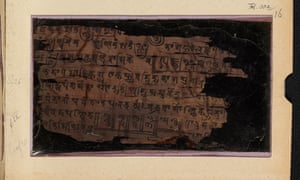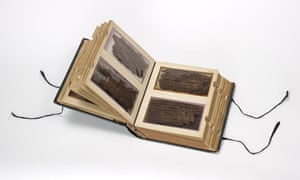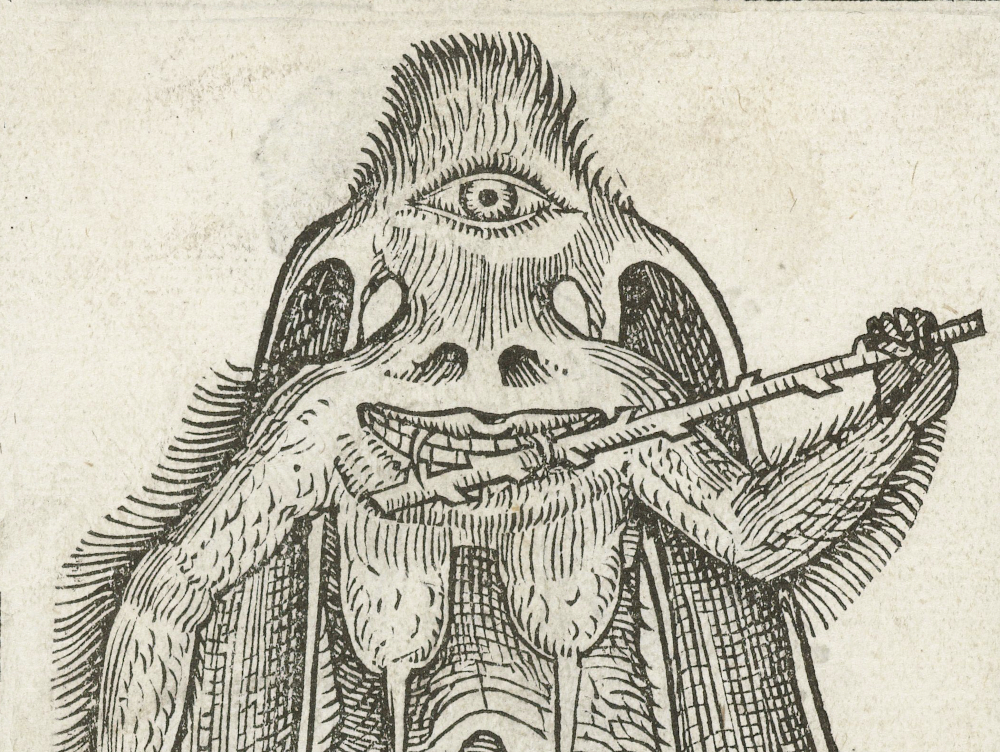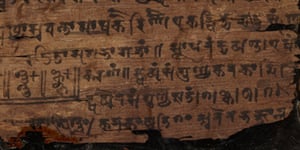|
 If you are ready to design your first RPG adventure, or learn how to improve the adventures you’ve already got, you’ve come to the right place. The “Adventure Builder” will cover all the bases, from hooks to background to traps and treasures. If you are ready to design your first RPG adventure, or learn how to improve the adventures you’ve already got, you’ve come to the right place. The “Adventure Builder” will cover all the bases, from hooks to background to traps and treasures.
This time out, we’ll cover the foundation you need to build a great adventure. It’s not the background, the stat blocks, or even the main villain. It’s monster selection, and figuring out the size and style of the adventure.
How Big is Your Design?
A common rule of thumb among the Wizards of the Coast design staff is that a typical group of adventurers will level up after about 13 successful encounters of the party’s encounter level (EL). That’s a great number to work from, especially if you want to design a large adventure that spans multiple levels.
In an adventure with dozens of encounters, the party will level up half-way through. Since the party will be tougher and more capable from that point on, the adventure you’ve planned for them needs too scale up as well. It’s better to scale up the second half of the adventure appropriately, but if you don’t want the PCs to level up midway through your epic you can prevent it by keeping your number of encounters small or by lowering their EL (to reduce the XP per encounter).
At the same time, just because you map an encounter doesn’t mean that it will be played. Some areas are never explored, after all, and not every encounter leads to combat (some are resolved or defeated through stealth, magic, bribery, or roleplaying). So if you do want the PCs to level up after your adventure then you’ll need more than 13 party-level encounters to provide enough options and fallbacks if the party doesn’t follow the expected path.
So, not too many encounters and not too few. As a general idea, you want to prepare about 20 to 25 encounters for your party per level of advancement. If you prefer mostly lower EL encounters, perhaps closer to 25 to 30. If you run marathon play sessions every weekend, you might want to prepare 40 to 50 encounters ahead of time, and assume the second half will be at a higher level. If you run short game sessions, you’ll want to make sure that the adventure breaks into small sections of 3 or 4 encounters with a satisfying conclusion to each.
Now you know how many encounters you should prepare. What should be in those encounters? And what mistakes should you watch out for?
Common design mistakes
There are four fairly common errors in beginning adventure design. When I worked on Dungeon magazine I saw them constantly, and the errors haven’t changed.
1) too much useless backstory
2) slow starts
3) random encounters
4) too many encounters
Each of these is easy to fix. Here’s how you do it.
Simple Backstory: Most DMs and designers hate to hear it, but much of the time lavished on history and background is wasted energy. Players never find out who dug the tomb, how the wizard was betrayed by her apprentice, or why the assassin guild changed sides and disappeared. Working on backstory doesn’t improve the gameplay experience for anyone but the bards and scholars obsessed with legends or lore. Unless it connects directly to action in the current timeframe (and the PCs have a way of learning it), skip the involved history. Save that for sourcebooks.
This is not to say cut it all. Details of which faction can be turned against another, which guard might take a bribe, or what the villain ultimately plans to do if the party doesn’t stop him are all appropriate. Make sure your backstory is recent and relevant; avoid anything that starts “Thousands of years ago…”
Start the Action Quickly: When players arrive at the game, they are looking to roll some dice. You can start the action immediately and draw the players away from pizza and other distractions by giving them what they want: a short, simple combat encounter to start off the game. Ideally, the encounter is pitched at an encounter level (EL) no more than one level above or below the party’s level.
The best of the “start in midstream” kick-offs are aimed at all the PCs when they are together, and raise questions that lead the party to the adventure hook. For instance, the party might see raiders attacking an inn where they had planned to spend the night — survivors of the attack tell the party about the black knight who leads them. Or a teleporting extraplanar threat might appear during broad daylight and accuse a cleric of breaking his vows — and threaten to sacrifice his corrupt church elders to a greater power. Where these encounters go ultimately isn’t the most important thing: they can be a little tangential to the plot, as long as they get the party thinking of the right sort of threat.
I’ll discuss this in more detail next time in “Adventure Hooks.”.
Don’t Be Random: Time is precious, so be careful how many tangents and red herrings you include in your design. In particular, random encounters might be fun, or can be useful to get a dawdling party going, or to work off that frustration players sometimes get where they just need to have their characters kill something, but they don’t usually make your adventure any better. If they are tied into the core adventure, then they shouldn’t be random at all; those clues should be built in to the design. If they aren’t tied in to the adventure core, then you are just wasting game time on an encounter that doesn’t advance the mission or the story goals for you or your players.
Trim Excess Encounters: If you create too many encounters and you don’t play every day, players forget what their mission was, or start to lose hope of making progress. They wind up grinding through so many nuisance encounters that they lose sight of the important clues, or they don’t talk to the important NPC, or they don’t search the critical room for documents — because they are too busy grinding through combats. If the encounters are just there to fill up space on a map, they might as well be random. Leave some rooms empty to speed up play.
Encounter Selection: Fitting Together a Cast
The real challenge is balancing encounters to present a variety of challenges for every member of the party. The adventure, after all, is a chance for the heroes to triumph over opposition (or fail miserably and go home).
Selecting for a Coherent Look and Feel
Story, setting, and immersion are all easier to pull off if your monsters fit a theme. That theme might be “united tribes of humanoids” or it might be “desert raiders”, but either way it cuts out many choices. Avoid the kitchen sink approach of just taking creatures that match the party level. Instead, make good use of the EL chart in the Dungeon Master’s Guide (page 49) to create encounters of small groups, pairs of monsters, and single creatures.
In particular, consider linked encounters for your cast. A guard dog or a sentry might be a much lower EL encounter from a combat perspective — but if the party fails to use a silence spell or a sneak attack to take it out quickly then it could make later encounters more difficult.
Balancing by EL and by Class
The Dungeon Master’s Guide offers direct advice on how many easy, challenging, very difficult, and overwhelming encounters a typical adventure should contain (see page 49). Hint: not many overwhelming encounters.
While this breakdown is good advice, it’s not complete. You’ll want to be sure that your 20 or 25 encounters include encounter variety by class as well as by EL. That is, make sure to include each of the following types of encounters, to give every class and every player a chance to shine.
 1) Two Skill Encounters: These are creatures or obstacles that can be defeated by stealth or skill, such as guards, castle walls, cliffs, informants, or low-hp creatures that can fall to a single sneak attack. 1) Two Skill Encounters: These are creatures or obstacles that can be defeated by stealth or skill, such as guards, castle walls, cliffs, informants, or low-hp creatures that can fall to a single sneak attack.
2) Four Pure Combats: You need some no-negotiation, straight-up combats that play to the fighter classes. Think orcs, wolves, ogres, giants — or dragons. Consider tactics first here: ambushes, charge, bull-rush, something to make it more than just attack rolls and damage rolls.
3) Two Magical Challenges: Include two magical challenges that require a knock, a fireball, or whatever other strengths your arcane spellcasters have. They might be lore-based challenges, such as knowing the weaknesses of an extraplanar creature, or they might require the use of Concentration or Spellcraft to manipulate a magical object or unravel a mysterious warding.
4) One Divine Challenge: The divine caster in the party is more than just a medic, so give him or her something to do with at least one undead turning, Knowledge (Religion), or nature-knowledge encounter (if your divine caster is a druid).
5) One Puzzle or Trap: This could be as simple as finding the key to a tough lock, deciphering an ancient script, or finding a secret door with Search, but you should include traps and puzzles for your party to solve. If the party doesn’t have a rogue in it, use Knowledge skill checks as a substitute.
6) Two Roleplaying Encounters: Social skills play an important part of the game too, and bards don’t like to just sit and do their stuff in the background. Provide at least two roleplaying encounters that can be defeated by the right social skills, bribes, exchange of services, or clever conversation. Examples include a scholar with a clue that the party needs to bypass some defenses or wardings, or a devil who will ally with them against a common foe.
7) One Mook Encounter: This should be against foes of at least 2 CR less than the party, and ideally 3 or 4 less. Think kobolds, bandits, skeletons, wild animals, or any other group of many foes that play to Cleave and area-effect spells. It’s fun to see heroes cutting a swath through hordes of foes.
8) One Polder: “Polder” is a Dutch word describing land reclaimed from the sea, but here it’s a more general term. As described in detail in Dungeon 135, polders are safe havens for adventurers, places where the party can regain strength. Think Rivendell in Lord of the Rings. Your polder could be a xenophobic elven tree city, a magical rope that generates rope trick spells as a charged item, a bound archon who wards a treasure, or a dwarven merchant caravan. If the party wishes, they can heal up to full strength and level up.
9) One Bigger Fish: To keep the blood flowing, you should have one overwhelming encounter that the party can’t handle without serious risk of a total party kill. This could turn into a roleplaying bit of Diplomacy, a chase, or a stealth challenge, depending on how the party handles it — but they should see that not every encounter in every adventure should be fought.
10) Big Finish: A grand finale encounter with all the trimmings: villain, minions, and a room or terrain that provides interesting combat options.
That list of recommended encounter types covers 17 encounters out of the 20 to 25 in your adventure, but you could easily double up on any of those categories. For example, if you know that the players like intense combat you could set up the remaining encounters as pure combats. If you know that your arcane caster is itching for a magical duel — or that the rogue will always try reconnaissance first — prepare those kinds of encounters.
Tailoring an adventure to show the heroes in the best light means more fun for everyone. Making an adventure that plays to the party’s weakness might be fun for you, but will only frustrate your players. Don’t take away their spells, sneak attacks, or combat items very often — those are the tools of heroism and the key to fun. Instead, give those strong points a challenge and a chance to shine.
To further tailor an adventure, consider some special encounter types if you have, say, a mounted knight, an archer, a monk, or a paladin in the group.
1) A mounted encounter
2) A ranged attack encounter
3) A chase (see Dungeon Master’s Guide II page 57 for chase rules), either hunting or being pursued.
4) A single-combat encounter or challenge from an honorable foe
5) Another class-specific encounter, such as one that requires bardic song, barbarian tracking, or fighting a ranger’s favored enemy.
Conclusion
Adventures work if they are fun and easy to play, and give every kind of hero a chance to shine in different encounter styles. The most important part of design isn’t the details of a stat block, but the type and variety of opponents and encounters.

About the Author
Wolfgang Baur is the author of dozens of adventures, from the “Kingdom of the Ghouls” and “Gathering of Winds” in Dungeon magazine to upcoming releases from Wizards of the Coast. He offers custom-tailored adventures and professional advice to patrons of the Open Design blog.
|













 If you are ready to design your first RPG adventure, or learn how to improve the adventures you’ve already got, you’ve come to the right place. The “Adventure Builder” will cover all the bases, from hooks to background to traps and treasures.
If you are ready to design your first RPG adventure, or learn how to improve the adventures you’ve already got, you’ve come to the right place. The “Adventure Builder” will cover all the bases, from hooks to background to traps and treasures. 1) Two Skill Encounters: These are creatures or obstacles that can be defeated by stealth or skill, such as guards, castle walls, cliffs, informants, or low-hp creatures that can fall to a single sneak attack.
1) Two Skill Encounters: These are creatures or obstacles that can be defeated by stealth or skill, such as guards, castle walls, cliffs, informants, or low-hp creatures that can fall to a single sneak attack.






THE MURALS OF DATONG
Mar 14
Posted by occu77
This interests me for purely archaeological, cultural, and historical reasons, but it also goes to show that in gaming and in writing fiction, authors and creators (and modern people in general) often overlook the near ubiquitous artwork and coloring that often existed in many Medieval and certainly a great many Ancient urban centers.
The answer seems self-evident to me if you think on it awhile. Lacking things like cinema and film and television, etc. then what would be your source of visual and imaginary stimulation in a world devoid of such things? Indeed, what would be your method of advertising your skill and craft and wealth compared to that of a neighbor or competitor? How would you communicate with foreigners? How would you establish yourself even after death?
Art work.
Impressed everywhere you could impress it as strikingly colorful and vibrant as you could make it.
I don’t think our ancestors were less impressed with visual imagery than we are, I think they were likely more conscious of it because they had less of an opportunity to render it in motion and in a way that was seemingly active and alive. They had to do so not “in the air” (images transmitted by carrier waves) but by time and by place as “solid images,” fixed by time and place. Art then was not shifting energy, but actual craft, and anything that called attention to that craft would have been a vital element of that craft. Color, skill, literary allusion or merit, design, complexity of composition, etc.
So they looked for every opportunity to do so that leisure or condition allowed.
This is why the Ancient world (especially) and any sufficiently advanced corner of the Medieval world looked as it did.
Writers, poets, game developers (even historians and non-fiction writers) would do well to note that in their own works. It would add real depth to their efforts…
Ancient Tomb Decorated with Vibrant Murals Found in China
Credit: Courtesy of Chinese Cultural Relics
A 1,000-year-old circular tomb, whose walls are decorated with colorful murals, has been discovered in Datong City, in northern China.
Because the tomb’s entranceway is sealed off with bricks, archaeologists had to enter through a hole in the deteriorating arch-shaped roof.
The team, from the Datong Municipal Institute of Archaeology, found cremated human remains in an urn in the middle of the tomb. No texts were found in the tomb, but the archaeologists believe that the tomb likely belonged to a husband and wife. [See Photos of the Circular Tomb and Colorful Murals]
The murals on the walls show servants, cranes and numerous articles of clothing that hang on several stands, their colors still vibrant despite the passage of a millennia.
Colorful clothing
Colorful clothing abounds on the tomb’s murals. One clothes stand, painted on a mural on the west wall, has “sky blue, beige, bluish-gray, yellowish-brown and pink clothes,” wrote the archaeological team in a paper published recently in the journal Chinese Cultural Relics. “The garment to the far right has a green-diamond grid pattern, each diamond of which has a small red decorative flower in it,” wrote the archaeologists, noting that another article of clothing has what appears to be a jade ring that “hangs at the waist.”
Credit: Courtesy of Chinese Cultural Relics
Additionally, the mural shows that “in front of the clothes stand there is a long rectangular table, on which are placed four round plates, black on the outside and red inside, holding, respectively, a headdress, bracelets, hairpins and combs,” the archaeologists wrote.
On the east wall of the tomb the mural shows another clothes stand. “On the stand hang beige, light green, bluish-gray, pink and brown clothes,” the archaeologists wrote. “On one of the garments hangs a ring-shaped pei pendant accompanied by a string of black beads.” Pei is a word that can mean “matching” or “accompanying” in English.
Liao Dynasty
The team believes that the tomb likely dates to the Liao Dynasty (A.D. 907–1125). Historical records indicate that this dynasty, controlled by the Khitan, flourished in northern China, Mongolia and parts of Russia.
At that time, people in northern China were sometimes buried in tombs decorated with murals. In 2014, Live Science reportedon the discovery of another tomb containing murals, which was found decorated with images of stars as well as numerous animals, including a crane, deer, yellow turtle and even a cat playingwith a silk ball. That tomb was also excavated by a team from the Datong Municipal Institute of Archaeology.
Archaeologists believe that both mural-decorated tombs will help shed light on those who lived during the Liao Dynasty.
The tomb with the murals showing colorful clothing was excavated by the Datong Municipal Institute of Archaeology team in 2007. The team published a report on the tomb in 2015, in Chinese, in the journal Wenwu. That report was translated into English for publication in Chinese Cultural Relics.
Original article on Live Science.
Editor’s Recommendations
Share this:
Posted in ALLTHING, Archaeology, Art, Article, Commentary, MY WRITINGS AND WORK, RESURRECTED RELICS, Uncategorized
Leave a comment
Tags: art, China, Medieval, mural